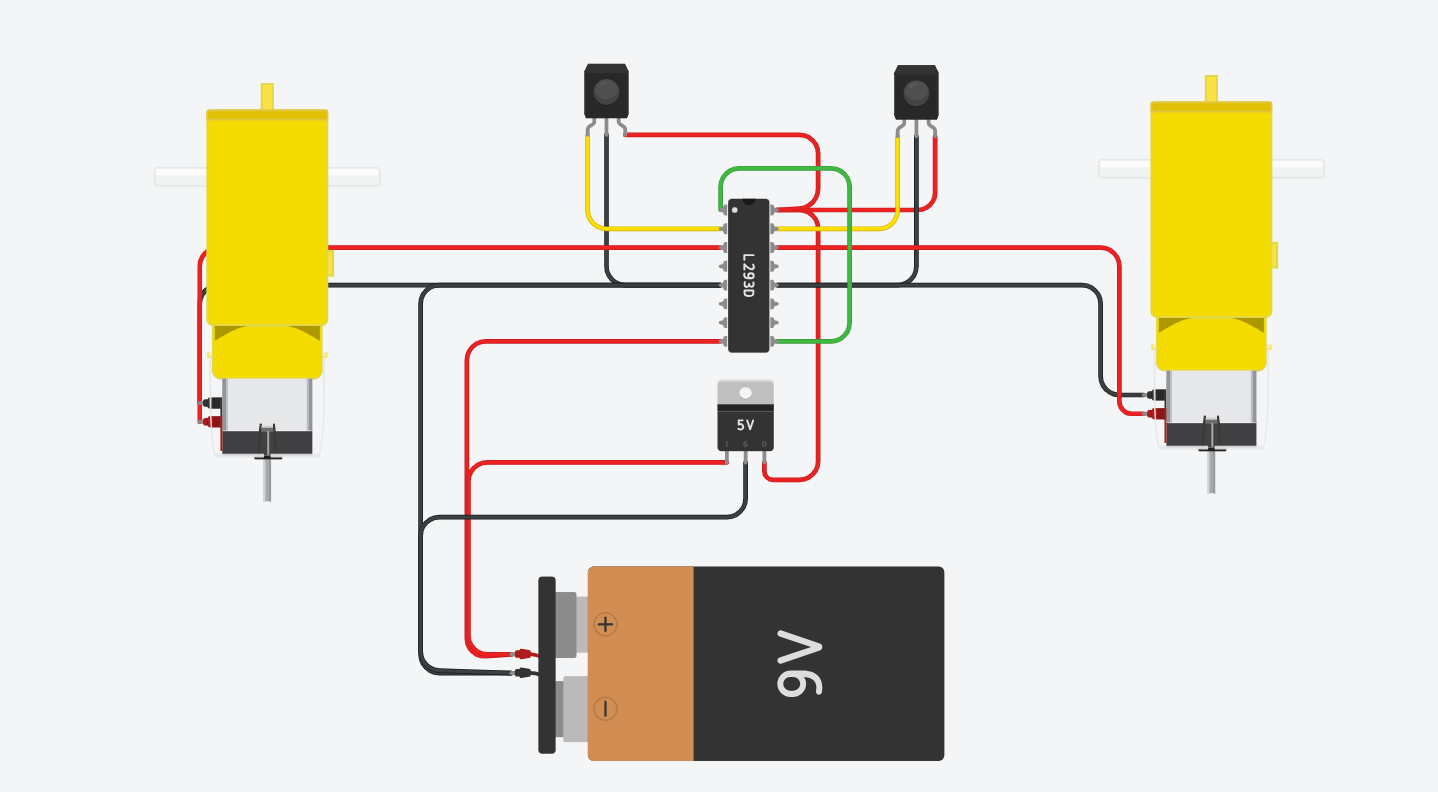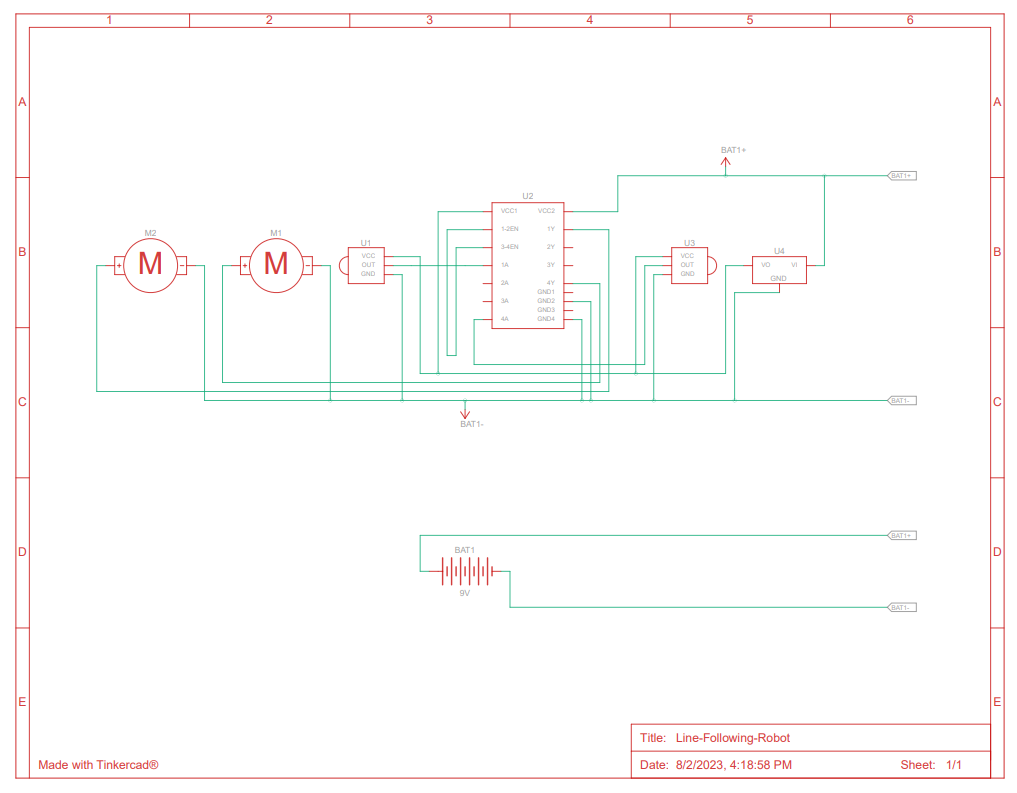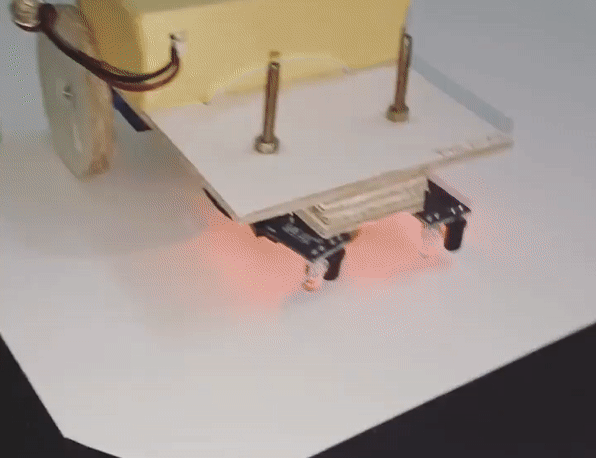Line-Following-Robot
Situation
After delving into microcontrollers, I discovered that relying solely on development boards like Arduino for every project might not always be the most practical choice due to increased costs. Seeking an alternate approach, I embarked on finding a more efficient solution. That's when I came across the idea of creating a line-following robot. While searching on YouTube, I noticed numerous videos featuring Arduino and Motor Driver Boards, which could be expensive for such a straightforward application. Determined to minimize costs, I decided to explore the possibility of using just one IC to achieve the same project goal, and the results were truly rewarding
Task
1.Create a robot with the goal of minimizing costs as much as possible.
2.Achieve the entire project using only one IC (Integrated Circuit) for control and functionality.
3.Avoid using development boards or motor driver modules to keep expenses low.
Action
To successfully accomplish the task, I utilized a motor driver IC, specifically the ULN2003 IC, which I discovered in a collection of spare parts. Alternatively, the L293D IC could be used, and both options are budget-friendly, costing around 10 cents.
With my knowledge and by carefully studying the IC's pinouts and datasheet, I ingeniously designed a circuit that precisely catered to the project's requirements.
In my pursuit of reducing expenses, I cleverly repurposed broken servos, which proved to be an economical solution for the robot's mechanical components.
Moreover, I ingeniously transformed a defunct power bank into a 7.4V 2-cell li-ion battery, effectively providing a reliable power source for the robot without incurring additional costs.

Result
As an outcome, I successfully brought to life a budget-friendly line-following robot, while also gaining invaluable expertise in crafting and designing custom circuits.
Technologies:
- - Electronics
- - Circuit crafting and designing
- - Datasheet understanding
- - Tinkercad
Circuit Diagram

